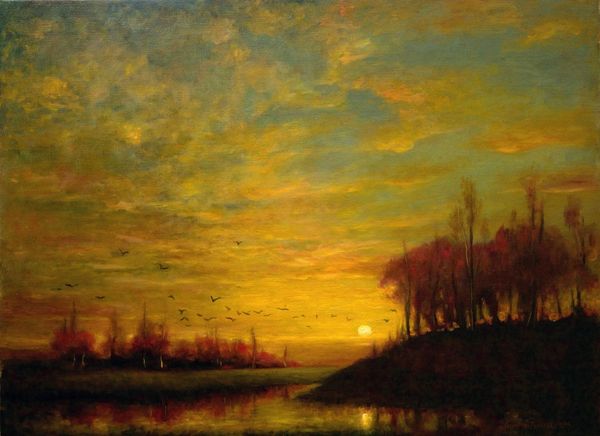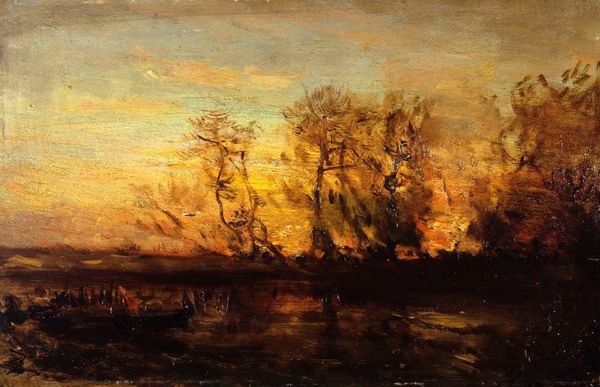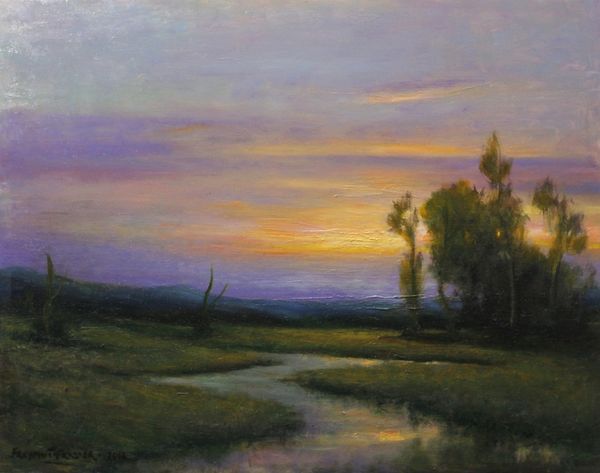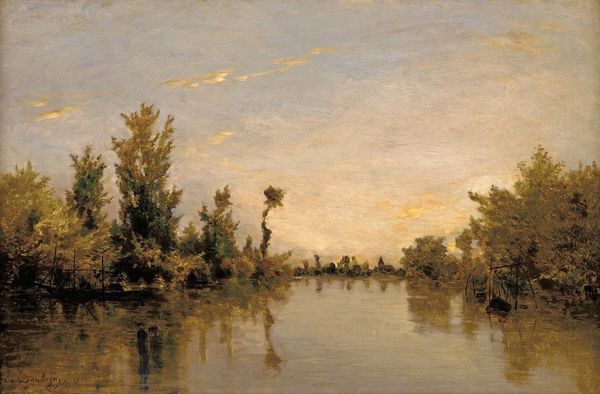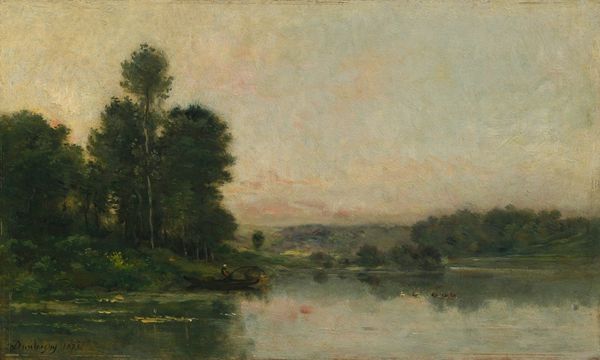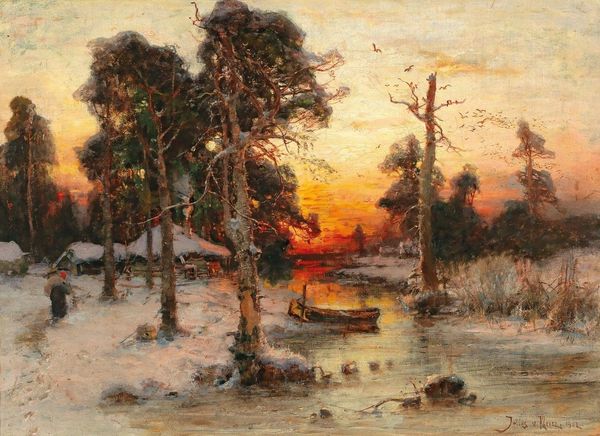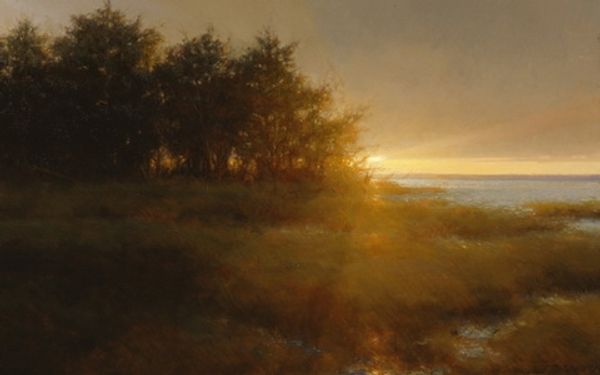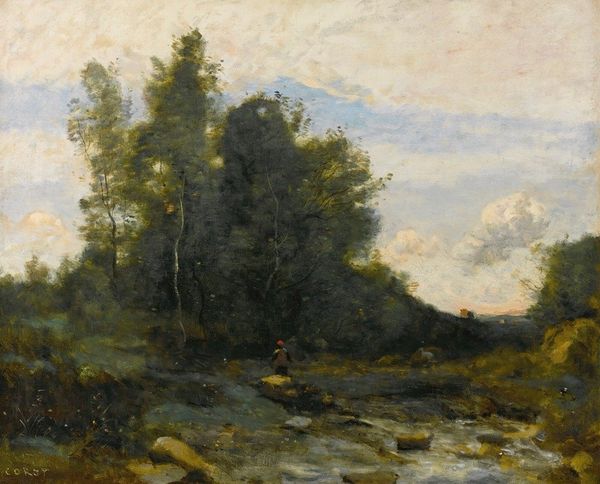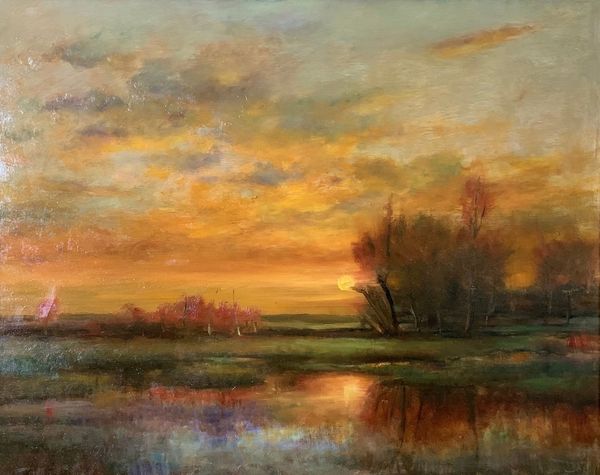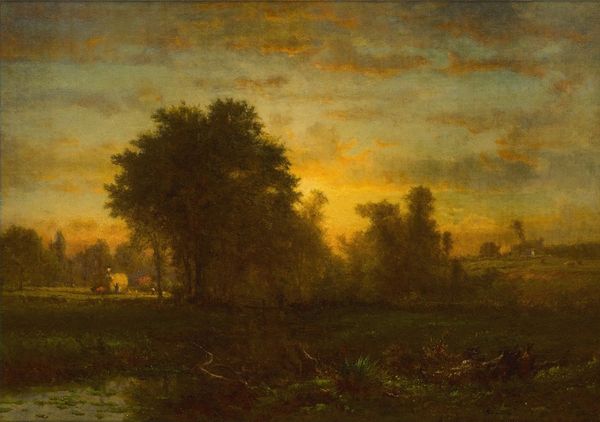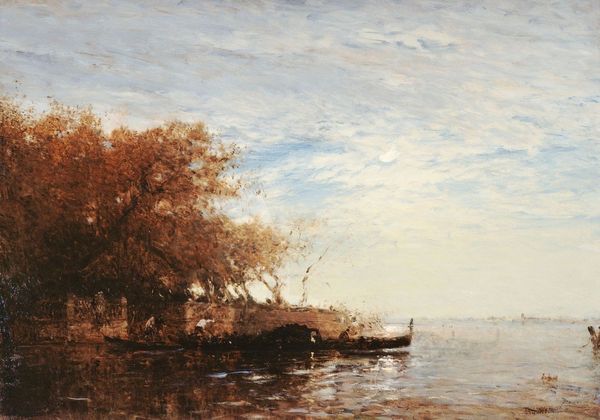
Copyright: Public Domain: Artvee
Editor: This is Félix Ziem's "Khartoum, Coucher De Soleil," painted sometime between 1885 and 1890. The way the light catches the water is just stunning! But beyond the aesthetic appeal, I'm curious about its deeper meaning. What do you see in this piece, considering the historical context? Curator: Ziem’s Orientalist works like this are not simply landscape paintings. We need to question what it meant to depict these landscapes in the late 19th century, a period rife with European colonialism. How do you think his position as a European artist influenced his portrayal of Khartoum? Editor: That's a great point. The romanticized sunset, while beautiful, almost feels like it glosses over the complex realities of colonial Khartoum. It feels… removed, like a tourist's gaze. Curator: Exactly. And think about the power dynamics at play. He's choosing what to show, framing the narrative for a European audience. Do you notice anything missing from the painting? Are there ordinary people, evidence of local governance? Editor: No, it’s a very depopulated, almost idealized view. I see the palm trees and river, but there's no sense of the people who lived there. It's as though they are part of the background. Curator: This absence is telling. The painting then becomes a site where we can interrogate how the West constructs ideas about the 'Orient', often obscuring indigenous experiences. Does the painting encourage you to research the artist and/or this place in more detail? Editor: Absolutely. I see it as a starting point for critical engagement rather than just passive appreciation. Now, the sunset seems like it's trying to soften a more difficult, complex history. Curator: Precisely. By examining the layers of representation, we move towards a richer and more nuanced understanding. It really shifts our perspective.
Comments
No comments
Be the first to comment and join the conversation on the ultimate creative platform.


